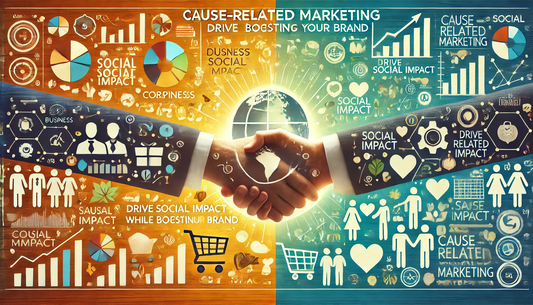🚀 Introduction to Influencer Piggybacking 🌟
Influencer Piggybacking is a strategy where startups partner with established influencers to gain visibility and credibility 🤝. For startups with limited resources, this approach can be a game-changer 💥.
By aligning with influencers, startups can tap into a larger audience 📈 and build trust through association 🤩. But how does it work, and why is it so effective for startups?
🌟 Top 10 Real-Life Examples of Influencer Piggybacking Success 💥
- ⌚ Daniel Wellington with Fashion Influencers: The watch brand grew rapidly by gifting watches to Instagram influencers 🎁.
- 🏋️ Gymshark with Fitness Influencers: Gymshark used fitness influencers to expand its reputation and attract a dedicated following 💪.
- 💄 Glossier with Beauty Influencers: Glossier collaborated with beauty influencers, becoming a go-to brand in the beauty industry 💅.
- ☕ Bulletproof with Wellness Influencers: Bulletproof partnered with wellness influencers to promote its coffee and products ☕.
- 🍔 HelloFresh with Food Bloggers: HelloFresh worked with food bloggers who shared meal-prep tips 🍲, making it popular among home cooks 👩🍳.
- 🚴 Peloton with Fitness Coaches: Peloton featured fitness coaches to boost credibility and connect with health-focused audiences 💪.
- 🛋️ Casper with Sleep Influencers: Casper partnered with sleep experts 🛌 to promote its mattresses as a wellness solution 💤.
- 💪 FitTea with Health Influencers: FitTea used health influencers to create buzz around its detox products on social media 🌿.
- 👗 Revolve with Fashion Bloggers: Revolve’s partnership with fashion bloggers helped make it a top fashion brand for young women 👠.
- 🍲 Soylent with Tech Influencers: Soylent collaborated with tech influencers 💻, tapping into an audience of busy professionals 📈.
🔍 How Influencer Piggybacking Works 💡
Influencers have built loyal followings who trust their recommendations 💫. When a startup partners with an influencer, it can "piggyback" off that trust and gain exposure to potential customers 🧲.
Instead of investing heavily in ads 📺, startups can use influencers to reach their audience in a more authentic way 🤳. This collaboration often involves influencers creating content, endorsing products, or sharing the startup’s story with their audience 🎉.
For example, a startup in the beauty industry could collaborate with a beauty blogger 💄 who has a massive following.
The influencer’s endorsement would instantly position the startup as a credible player in the market, giving it an edge over competitors with larger budgets 🌐.
💸 Benefits for Startups 💸
- Lower Marketing Costs: Instead of investing heavily in traditional advertising, startups can leverage the audience of influencers at a fraction of the cost 💰.
- Access to a Larger Audience: Influencers have dedicated followers who are already engaged 📲, providing startups with a ready-made audience 📈.
- Credibility Through Association: Associating with well-known influencers instantly boosts a startup’s credibility 🛡️. Followers tend to trust influencers, and that trust can be transferred to the startup 🏆.
⚠️ Challenges and How to Overcome Them 🚧
Despite the benefits, there are challenges. Brand alignment is key—working with the wrong influencer can damage your brand 🌐. Additionally, many startups may be vying for the same influencer's attention, leading to increased competition 🔥.
To overcome these challenges, startups should:
- Choose the Right Partner: Ensure the influencer aligns with your brand’s values and target audience 🎯.
- Be Strategic: Rather than chasing the biggest names, find niche influencers who have a strong connection with your ideal customers 💪.
- Position Yourself Effectively: Approach influencers with a compelling story and a clear value proposition 📝.
📚 Real-Life Examples or Case Studies 📚
Many successful startups have leveraged influencer piggybacking to grow 💹. One notable example is Daniel Wellington, a watch brand that skyrocketed by collaborating with influencers on Instagram 📸.
The brand sent its watches to influencers who shared posts with their followers, creating a massive buzz around the product 🎉.
Another example is Gymshark, a fitness apparel brand that used fitness influencers to build its reputation 🏋️. By tapping into the influencer community, Gymshark rapidly grew its audience and sales 💥.
📝 Step-by-Step Guide to Implementing Influencer Piggybacking 📑
- Identify Your Target Audience: Understand who your customers are and which influencers they follow 🧠.
- Research Potential Influencers: Look for influencers in your niche who align with your brand values 🔍.
- Reach Out with a Clear Offer: Craft a message that highlights what your startup brings to the table 📝 and how collaboration benefits the influencer.
- Establish Clear Terms: Make sure both parties agree on deliverables, timelines 📅, and compensation, if applicable 💸.
- Monitor and Measure Results: Track engagement, reach, and conversions to understand the impact of the partnership 📊.
💥 Tips for Maximizing Results 💥
- Be Authentic: Ensure that any partnership feels genuine. Audiences can tell if an influencer is promoting a product just for the money 💵.
- Leverage Multiple Platforms: Work with influencers across various platforms—Instagram, YouTube, TikTok—to maximize exposure 📲.
- Build Long-Term Relationships: Instead of one-off promotions, aim to build ongoing partnerships with influencers to maintain sustained visibility 🔄.
🔚 Conclusion 🔚
Influencer piggybacking is an incredibly powerful tool for startups looking to grow quickly without breaking the bank 🏦.
By strategically partnering with the right influencers, startups can tap into existing communities, build credibility, and ultimately accelerate their growth 🚀. Now is the time for founders to start exploring this strategy and find the perfect influencers to help their brand shine ✨.










